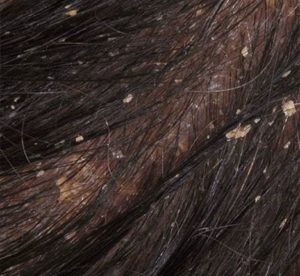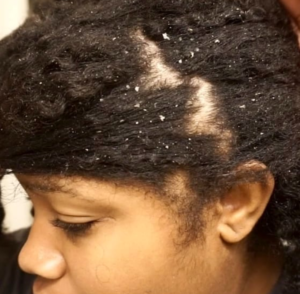02 Jun SEBORRHEIC DERMATITIS, TIPS AND WHEN TO SEE YOUR DOCTOR!
Seborrheic dermatitis also referred to as dandruff, seborrheic eczema and seborrheic psoriasis is a common skin condition that mainly affects your scalp. For infants, the condition is known as cradle cap and is characterised by crusty, scaly patches on the scalp.
It causes scaly patches, inflamed skin and stubborn dandruff. It can also affect oily areas of the body, such as the face, sides of the nose, eyebrows, ears, eyelids and chest. It may go away without treatment or you may need many repeated treatments before the symptoms go away. Daily cleansing with a gentle soap and shampoo can help reduce oiliness and dead skin buildup.
CAUSES
It’s exact cause is unknown but may be related to:
• A yeast (fungus) called malassezia that is in the oil secretion on the skin
• An irregular response of the immune system
Here are some risk factors:
• Neurologic and psychiatric conditions, such as Parkinson’s disease and depression
• A weakened immune system, such as seen in organ transplant recipients, people with HIV/AIDS, and some cancers
• Recovery from stressful medical conditions, such as a heart attack
• Some medications
SYMPTOMS
Seborrheic dermatitis signs and symptoms may include:
• Skin flakes (dandruff) on your scalp, hair, eyebrows, beard or mustache
• Patches of greasy skin covered with flaky white or yellow scales or crust on the scalp, face, sides of the nose, eyebrows, ears, eyelids, chest, armpits, groin area or under the breasts
• Red skin
• Itching
The signs and symptoms may be more severe if you’re stressed, and they tend to flare in cold, dry seasons.
HOME TIPS
Although, seborrheic dermatitis is likely to reoccur at some point, below are some great home tips that can help with symptoms.
- Wash your scalp regularly
This helps in getting rid of the dandruff (build up of dead skin). - Soften and remove scales from your hair
Apply mineral oil or olive oil to your scalp. Leave it in for about an hour. Then comb or brush your hair and wash it. - Wash your skin regularly
Rinse the soap completely off your body and scalp. It is best you avoid harsh soaps as this could act as a trigger. Do not forget to use a moisturizer. - Avoid styling products and products containing alcohol
Stop using hair sprays, gels and other styling products while you’re treating the condition, these can cause the disease to flare up. - Wear smooth-textured cotton clothing
This helps keep air circulating around your skin and reduces irritation. - If you have a beard or mustache, shampoo facial hair regularly
Seborrheic dermatitis can be worse under mustaches and beards. Shampoo daily until your symptoms improve. Then switch to shampooing once a week. Shaving might ease your symptoms. - Gently clean your eyelids
If your eyelids show signs of redness or scaling, wash them each night with baby shampoo and wipe away scales with a cotton swab. Warm or hot compresses may also help. - Gently wash your baby’s scalp
If your infant has cradle cap, wash the scalp once a day. Gently loosen the scales with a small, soft-bristled brush before rinsing out the shampoo.
A doctor can bring in certain prescription products to help manage this condition.
WHEN TO SEE YOUR DOCTOR
See your doctor if:
• You’re so uncomfortable that you’re losing sleep or being distracted from your daily routines
• Your condition is causing embarrassment and anxiety
• You suspect your skin is infected
• You’ve tried self-care steps without success
Dealing with this?
Reach out to us via info@belfioreng.com to book a Consultation with our Dermatologist.






